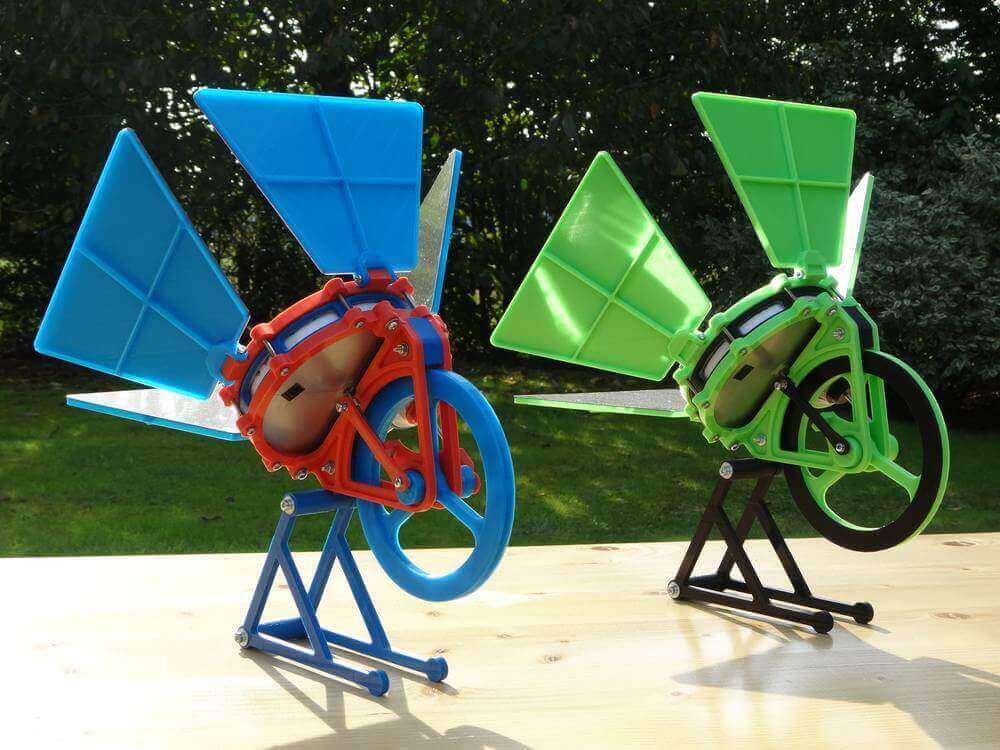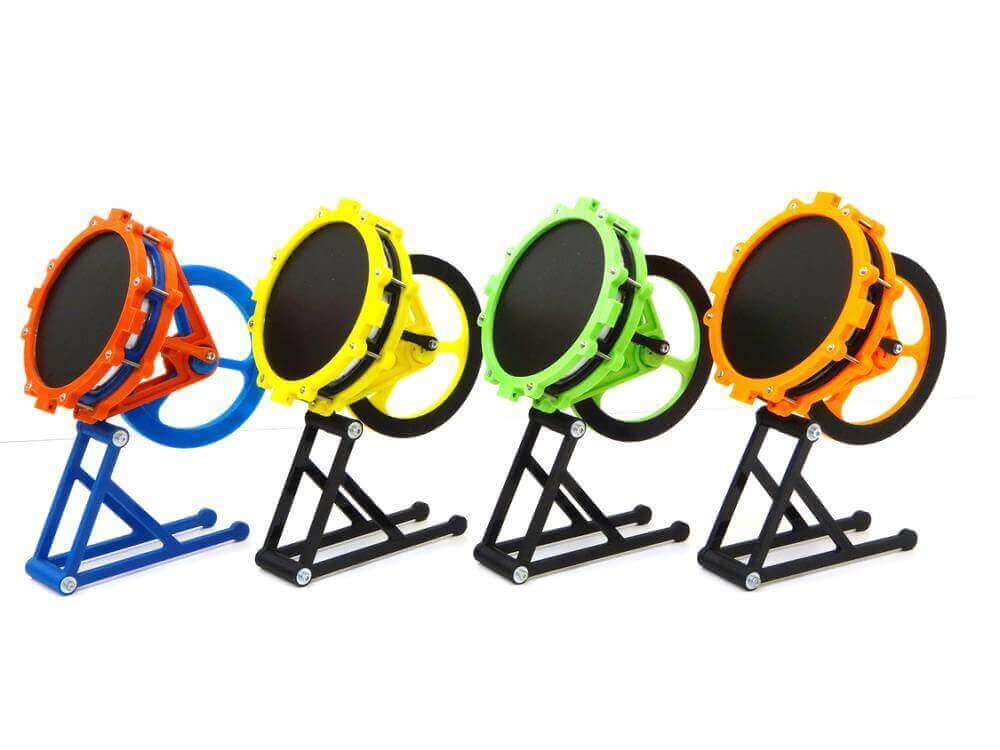What’s the story? German engineer Andreas Haeuser built a solar-powered Stirling engine using almost entirely 3D printed parts. In this article, we´re going to see what it can do and how useful it is.
A Stirling engine is an engine type we don´t hear of very often nowadays.
When you think solar power, you usually have photovoltaic in mind. Stirling engines are heat engines that operate on cycles of air or a gas compressing and expanding. Heat is conversed into mechanical work. For those that didn’t learn about Stirling engines in their school career, we´ll very roughly try to explain how a Stirling engine works.
How a Stirling engine works (in a nutshell)
Stirling engines were invented and patented by Robert Stirling in 1816 originally as one of the first inventions rivaling the steam engine. Due to various reasons, it was mostly used for low-power domestic applications for over a century. Stirling engines’ advantages are their high efficiency compared to steam engines, the quietness at which they operate, and the ability to run on almost any heat source.
The energy source of any Stirling engine is heat. Gas in a piston gets warm and expands. The Wikipedia page has all the information about Stirling engines you could need and some animations that illustrate very nicely how they work- better than I could explain it here.
The energy source of the engine may be as small as a candle, or much bigger. A constant, free heat source (maybe the greatest we have at our disposal) is our sun. The incoming sun rays have a power of 165 watts per square meter on 24 hours average. The geographic position, height and weather all have great influence on how much your mileage may vary.
Power your devices with this engine
The 3D printable Stirling engine by Haeuser seems to need a few off-the-shelf items in addition to the 3D printed parts, mainly screws and nuts. Its design with a black membrane absorbs the sunlight and turns it into heat. While Haeuser’s engine can also use the heat of a cup of tea or another warm surface, it is clearly designed as a solar powered engine. Reflectors are included in the manual to increase the power on cloudy days.
Regarding the practical use of the engine Haeuser created, we can’t say much. Stirling engines are often used to pump liquids, more rarely to generate electricity. If you don’t need high amounts of power in a short span of time, you could just let it charge your batteries. In 3rd world countries, an engine like this outside could power a little LED light fixture on the inside. And also, the device is scalable. So, if your printer can print bigger, of course.
https://youtu.be/DLRFWSybSvk

10 Euros for the plans and STL files
While his machine looks very cool, Haeuser charges 10 Euros for the full manual and files on his website. With no included prospects of using any generated energy, I don’t know if that´s worth it for you. There are several other models for 3d printed Stirling engines online for free; only they’re not solar powered. But if you just want to learn and see how a Stirling engine works, they maybe are the better option.
Because the Stirling engine is compatible with alternative and renewable energy sources, it could become increasingly significant as the price of conventional fuels rises, and also in light of concerns such as peak oil and climate change. But the engines we featured here are very small-scale and should be considered learning devices.
Advertisement
License: The text of "A solar engine you can 3D print" by All3DP is licensed under a Creative Commons Attribution 4.0 International License.

